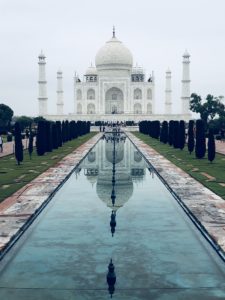At this point, our group and I have been in India for close to two weeks. We have spent the past two weeks in Delhi, Jaipur, and Agra, visiting a myriad of cultural and historical sights like the Taj Mahal and the Red Fort. This has allowed us to understand how this culture has developed and why things are the way they are. Exploring the different locations and attractions, it is easy to see the cultural melting pot that is India. From the Islamic influences that have shaped beliefs and architecture in North India to the deeply rooted Hindu values that shape customs and traditions, India and its sights mesh many different perspectives into one. As the times have changed, the varying influences and leaders can be seen in the development of new monuments over time.
In addition to the sights, a large part of our trip also involves exploration and understanding of the six segments of poverty and what it manifests as in populations around India. As a quickly developing nation, India still has a large sum of people that live at or below the poverty line, but these people live in conditions far worse and far different from those that people in the United States live at. Seeking to learn more about this, we have spent a lot of time in these three cities, exploring and visiting communities and families in these populations to see what their major issues are and what their lives are like.
Though we have worked with these populations, we have yet to apply our knowledge and background from these visits towards our final innovation project. During the next ten days, we will be living and working in the Himalayas to find ways to apply our business perspective towards addressing impoverished communities, finding ways to help develop their ideas and innovations into products for the greater market.

